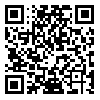Volume 3, Issue 2 (12-2021)
pbp 2021, 3(2): 54-55 |
Back to browse issues page
Faculty of Medicine, School of Basic Medical Sciences, Universiti Sultan Zainal Abidin, Kampus Kota, Kuala Terengganu, Malaysia , raousm@gmail.com
Abstract: (1194 Views)
Matricaria recutita (Chamomile) is one of the most important and oldest medicinal plants known to man in the world. The main origin and center of the gene pool of this plant is the Mediterranean region, especially Iran. The aim of this study was to investigate the drug interaction of chamomile with routine chemical drugs. Consumption of chamomile with anticoagulants, sedatives, drugs requiring GI absorption, and iron supplementations causes drug interactions. Concomitant use of chamomile with these chemicals should be used with caution to prevent drug interactions and side effects.
Type of Study: Research |
Subject:
Bioactive Compounds
Received: 2022/04/3 | Accepted: 2021/02/25 | Published: 2021/02/25
Received: 2022/04/3 | Accepted: 2021/02/25 | Published: 2021/02/25
References
1. Avallone R, Zanoli P, Puia G, Kleinschnitz M, Schreier P, Baraldi M. Pharmacological profile of apigenin, a flavonoid isolated from Matricaria chamomilla. Biochemical Pharmacology. 2000; 59: 1387-94.
2. Grejtovsky A, Markusova K, Eliasova A. The respone of chamomile plants to soil zinc supply. Plant, Soil and Environment. 2006; 52: 1-7.
3. Foster S. Chamomile. Botanical series. American Botanical Council, Austin. Texas. 1991, 307.
4. Anne O, Tiiu K, Kailas W. Volatile constituents of Matricaria recutita L. from Estonia. Proceedings of the Estonian Academy of Sciences. 2001; 50: 1, 39 – 45.
5. Salamon I. The Slovak gene pool of German chamomile and comparison in its parameters. Horticultural Science. 2004; 31: 70-75.
6. Zanoli P, Avallone R, Baraldi M. Behavioral characterization of the flavonoids apigenin and chrysin. Fitoterapia. 2000; 71: 117-123.
7. Fleming T. PDR for Herbal Medicine. Second Edition; Medical economics Co. Montvale New Jersey, 2000.
8. Brent J. Herbal drug interaction chart. http:// www.sdh.sk.ca/rxfiles. July 2002.
9. Kuhn MA. Herbal Remedies: Drug – Herb Interactions. Critical Care Nurse. 2002; 22: 22- 32.
10. Corponter DO. Nursing herbal medicine Handbook. Springhouse Corporation, Pennsylvania; 2001; pp: 483 - 8.
11. Warber S, Bancroft J, Pedroza J. Herbal Appendix. Clinics in Family Practice. 2002; 4:1- 16.
| Rights and permissions | |
 |
This work is licensed under a Creative Commons Attribution-NonCommercial 4.0 International License. |




